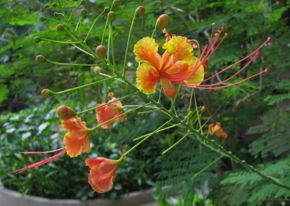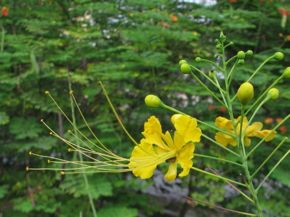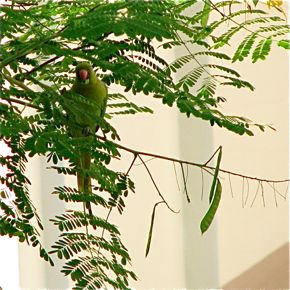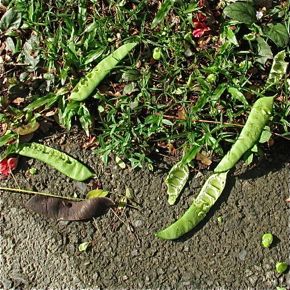Sun Chong Hong observed a female rose-ringed parakeet (Psittacula krameri) feasting on the fruits of the peacock flower (Caesalpinia pulcherrima). This is a sparse woody shrub native to tropical Americas but widely grown throughout the tropics. It is a popular garden plant with free flowering colourful flowers.
In the condominium where Chong Hong lives, two types are grown, both about a metre tall. There is one with red flowers (C. pulcherrima) (above left) and another with yellow flowers (C. pulcherrima var. flava) (above right).
The parakeet was seen on the plant with yellow flowers, handling the green pods to get at the seeds. Grabbing the pods with one foot, the parakeet used its sharp, curved bill to extract the seeds (below left). The discarded pods as well as uneaten seeds were left littering the ground below (below right).
Writes Chong Hong, “I only realised there was a pair as they flew away when someone walked past the plant.”
Angie Ng, a plant ehthusiast, adds, “I used to enjoy seeing these Rose-ringed Parakeets feeding on the peacock flowers, in my neighbour’s garden. Don’t see them now, probably because no more of these shrubs are planted.”
Images by Sun Chong Hong.













One Response